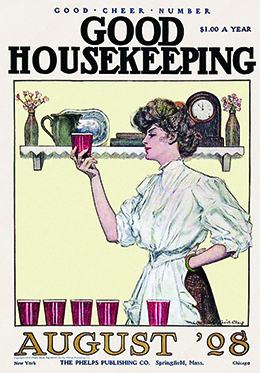| << Chapter < Page | Chapter >> Page > |
While the working class were confined to tenement houses in the cities by their need to be close to their work and the lack of funds to find anyplace better, and the wealthy class chose to remain in the cities to stay close to the action of big business transactions, the emerging middle class responded to urban challenges with their own solutions. This group included the managers, salesmen, engineers, doctors, accountants, and other salaried professionals who still worked for a living, but were significantly better educated and compensated than the working-class poor. For this new middle class, relief from the trials of the cities came through education and suburbanization.
In large part, the middle class responded to the challenges of the city by physically escaping it. As transportation improved and outlying communities connected to urban centers, the middle class embraced a new type of community—the suburbs. It became possible for those with adequate means to work in the city and escape each evening, by way of a train or trolley, to a house in the suburbs. As the number of people moving to the suburbs grew, there also grew a perception among the middle class that the farther one lived from the city and the more amenities one had, the more affluence one had achieved.
Although a few suburbs existed in the United States prior to the 1880s (such as Llewellyn Park, New Jersey), the introduction of the electric railway generated greater interest and growth during the last decade of the century. The ability to travel from home to work on a relatively quick and cheap mode of transportation encouraged more Americans of modest means to consider living away from the chaos of the city. Eventually, Henry Ford’s popularization of the automobile, specifically in terms of a lower price, permitted more families to own cars and thus consider suburban life. Later in the twentieth century, both the advent of the interstate highway system, along with federal legislation designed to allow families to construct homes with low-interest loans, further sparked the suburban phenomenon.
Social norms of the day encouraged middle-class women to take great pride in creating a positive home environment for their working husbands and school-age children, which reinforced the business and educational principles that they practiced on the job or in school. It was at this time that the magazines Ladies Home Journal and Good Housekeeping began distribution, to tremendous popularity ( [link] ).


Notification Switch
Would you like to follow the 'U.s. history' conversation and receive update notifications?